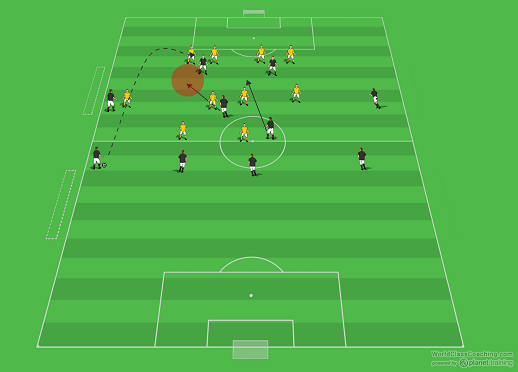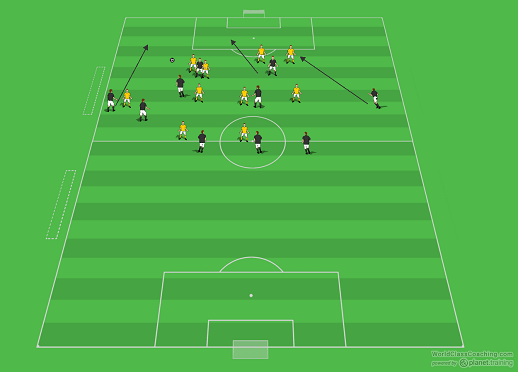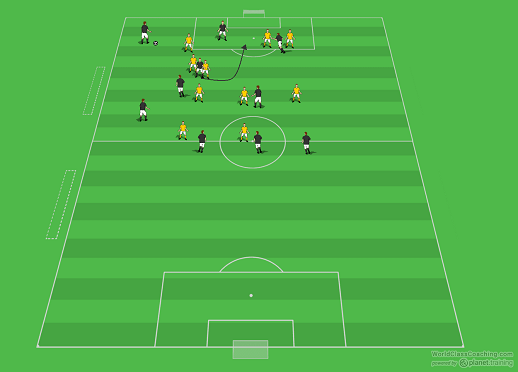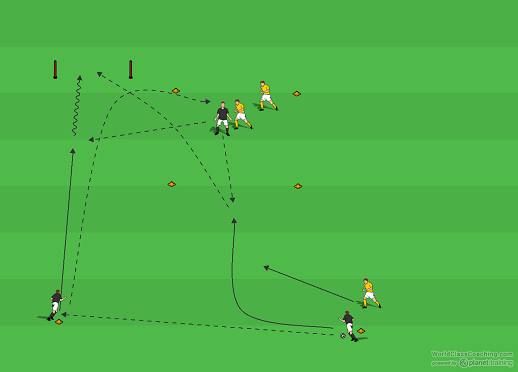By Mike Smith
I had the opportunity this week to watch the Nashville SC of the USL take on ( and defeat ) the Colorado Rapids of MLS in the Lamar Hunt Open Cup. While on paper Nashville may have been overmatched, the way the game was played told a different story. Nashville played brilliantly with a clear defensive stance and affinity for long services. I was watching with one of my freshman players ( his uncle is a part owner of Nashville SC ) and he kept asking why no one was up there helping the forwards, who were winning several of the long services but then mired down immediately by 2 and 3 defenders. In this case, the long balls without help were tactical however, in the eyes of a young player, there was an opportunity there. Nashville SC needed the extra numbers in mid field to maintain their defense and not get countered. They were playing for deep crosses and corners, and a goal each way led to a 2-0 victory. In many matches though, too many teams who are willing and able to send more numbers into attack, simply do not account for the second ball after a long service. This is a missed opportunity as on most attempts, contested long balls are not played cleanly by the attacker OR the defender. Just one more attacking player trailing the service for the second ball could result in increased scoring chances. For example:
Below the left back is sending up a long ball to a well marked striker. If a center mid can track this and assume the second ball is going to be bounced back out wide by the defender then the attack has a chance not to stall.


The above diagram shows the header forward from the trailing center mid and below, the advantage to the attacking team is clear. Of course, it all works perfectly here on paper but even if it doesn’t generate a chance all the time, the defense has still been pushed back a little deeper. Note below the striker who was the initial target and the defenders around him ( or her ). With a won ball going forward these players will be out of position. No recovery and the space in the box is open. A good recovery and the striker is most likely alone at the top of the box with a shot, which was the goal of the initial long service any way. It is certainly something to think about and if it is planned and practiced, has a high percentage of either creating chances, or at least pushing the defense deeper in their own half, both are wins in my book.

To practice winning the second ball going forward, simply set up the drill as it would be played out in a game.
Set Up
Create a 7yd x 7yd square as shown. Two defenders will work against a lone striker in this square. Players can progress through the drill in groups of 3. Place a gate ( shown below with red poles ) behind and wide of the box. Drop two additional cones below the box approx 20 yds, one out on the line and one more central just past the edge of the box. Play starts with the attacker on the deep central cone passing the ball out wide to the attacker on the line. The initial attacker will be trailed by a defender. When the wide attacker gets the ball, they will lob it into the box where the attacker there will go for the win at their feet OR the flick on to the on coming supporting attackers. HOWEVER, the defending players in the box should just attempt to head it out wide, creating the second ball. It is up to the supporting attackers to then get the second ball forward and wide quickly.

If the defending team clears the ball from the box and the attacking team does not win it, the teams rotate. Teams obviously rotate on any attacking combination which gets the ball through the gate under control. Additional groups of 3 can be waiting to rotate in here as well.
Progression
Additional attackers and defenders can be added or removed here. The goal is to create a realistic game scenario where either the attacker in the box wins the ball at their feet and can combine with the oncoming support OR the oncoming support is there to win the second ball and keep the attack going.
Coaching Points
The coach should focus on the timing of the supporting runs to enter the space where the second ball will be at the right time as well as how quickly the attacker moves the ball wide and forward. Keeping up the speed of the attack is critical here.
By Mike Smith
Currently the Head Coach for University Heights Academy Boys Soccer in Hopkinsville, KY , Mike is in his 14th year as a high school head coach with 23 years coaching experience overall and 34 year as a student and fan of the game. He holds a USSF D License.


